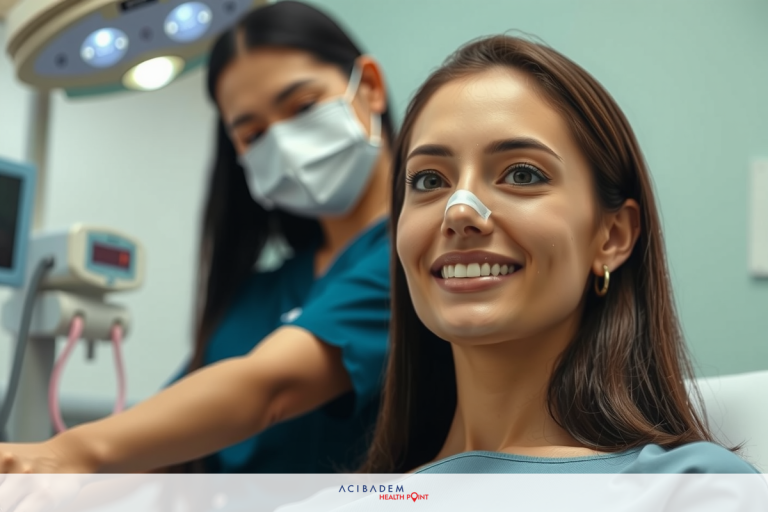Why Plaster After Rhinoplasty
Why Plaster After Rhinoplasty Rhinoplasty often involves the application of plaster after surgery. This might raise questions for those who are considering or have recently undergone this form of cosmetic treatment. The plaster, or nasal splint, is not an arbitrary accessory but a crucial component in the healing process post-surgery.
The immediate aftermath of rhinoplasty can be characterized by swelling and bruising around the nose area. Here enters the role of plaster: it aids in controlling these physical responses while maintaining the new shape that has been surgically created. More than just providing support, plaster contributes significantly to ensuring optimal recovery and achieving desired aesthetic outcomes.
Caring for your plaster ensures comfort during recovery and fosters ideal healing conditions. Simple practices such as keeping the area clean can make a world of difference in your post-operative experience. Understanding how to care for your plaster is vital information that patients need before embarking on their journey towards their new look.
Benefits of Wearing Plaster
Rhinoplasty recovery is a process that requires patience, careful attention to post-operative care and respect for the healing timeline. One critical factor in this journey is the use of plaster after surgery. The nasal splint, often referred to as ‘plaster’, plays an essential role in maintaining the newly achieved shape while promoting proper healing.
The benefits of wearing plaster extend beyond mere support for your new nose contour. It fundamentally aids in controlling swelling and bruising which are common occurrences after such surgical procedures. Furthermore, it provides a stable environment where the delicate changes made during surgery can set without disturbance or disruption. This stability creates ideal conditions for successful rhinoplasty recovery, ensuring that you reap full benefits from your procedure.
Post-operative care involves more than just medication and rest: effective nose job healing necessitates respecting all aspects of doctor’s instructions including wearing plaster as advised by them. This may seem like an inconvenience at first glance but understanding its benefits makes clear why it’s worth enduring some discomfort temporarily for longer-term gains. Not only does plaster provide physical support during recovery period but also psychologically reassures patients knowing they’re doing everything possible to facilitate their own best outcomes.
How Plaster Supports Healing
The role of plaster after rhinoplasty cannot be overstated, particularly in terms of how it supports healing during the recovery phase. This seemingly simple tool is a powerhouse when it comes to fostering an environment conducive to proper nose job healing. The essence of its function lies not just in providing physical support but also contributing significantly towards preserving the newly crafted shape.
A surgical procedure such as rhinoplasty introduces changes that need time and stability for optimal integration into one’s physiology. The post-operative period involves delicate processes like tissue regeneration, inflammation reduction, and reshaping which are all part of the body’s natural response to surgery. Plaster helps control these responses by immobilizing the area and reducing movement that could potentially disrupt this critical process.
The journey towards achieving desired results from your rhinoplasty relies heavily on how effectively you navigate through your post-operative care plan. Adherence to medical advice including wearing plaster as

directed ensures you’re providing maximum support for your body’s innate ability to heal itself efficiently. It’s worth recognizing that while patience may be tested during this period, commitment will pay off in form of a smooth recovery and successful outcome fulfilling your aesthetic aspirations.
Why Plaster After Rhinoplasty: Caring for Your Plaster
As we delve deeper into the rhinoplasty recovery journey, understanding how to care for your plaster becomes paramount. It’s not merely about wearing it but ensuring its maintenance as per post-operative instructions which can drastically impact both healing and comfort levels. Let’s reveal some practical tips that will prove beneficial in this regard.
- Keep it Dry: This might seem obvious but is worth mentioning due to its importance. Exposure to moisture can soften the plaster, reducing its effectiveness in providing support during nose job healing.
- Avoid Tampering: Resist any urge to adjust or tamper with your nasal splint unless instructed otherwise by a healthcare professional as doing so could disrupt the healing process.
- Cleanliness Matters: While you cannot wash the plaster directly, maintaining overall facial cleanliness promotes a healthier environment around it.
- Follow Removal Guidelines: When it’s time for removal, following specific guidelines provided by your medical team ensures safety and minimizes discomfort.
- Practice Patience: It may feel uncomfortable at times but remember that every day brings you closer to full recovery!
These simple yet effective strategies are integral parts of optimal rhinoplasty recovery protocol promising successful outcomes and comfortable experiences when dealing with post-surgery plasters!
Why Plaster After Rhinoplasty: Frequently Asked Questions
How long should I wear the plaster after rhinoplasty?
The duration for wearing plaster can vary based on individual cases and the specifics of your procedure. Your surgeon will provide a tailored timeline suitable for your recovery.
Is it normal to feel discomfort while wearing plaster?
Yes, some degree of discomfort is expected initially as your body adjusts to the changes post-surgery. However, severe pain or distress requires immediate medical attention.
Can I remove the plaster at home by myself?
It is strongly recommended that removal be done under professional supervision only in order to prevent any inadvertent damage to the healing area.
What happens if my plaster gets wet or damaged before it's time for removal?
If such an incident occurs, contact your healthcare provider immediately. They might need to replace it with a new splint depending upon its condition and impact on nose job recovery process.











